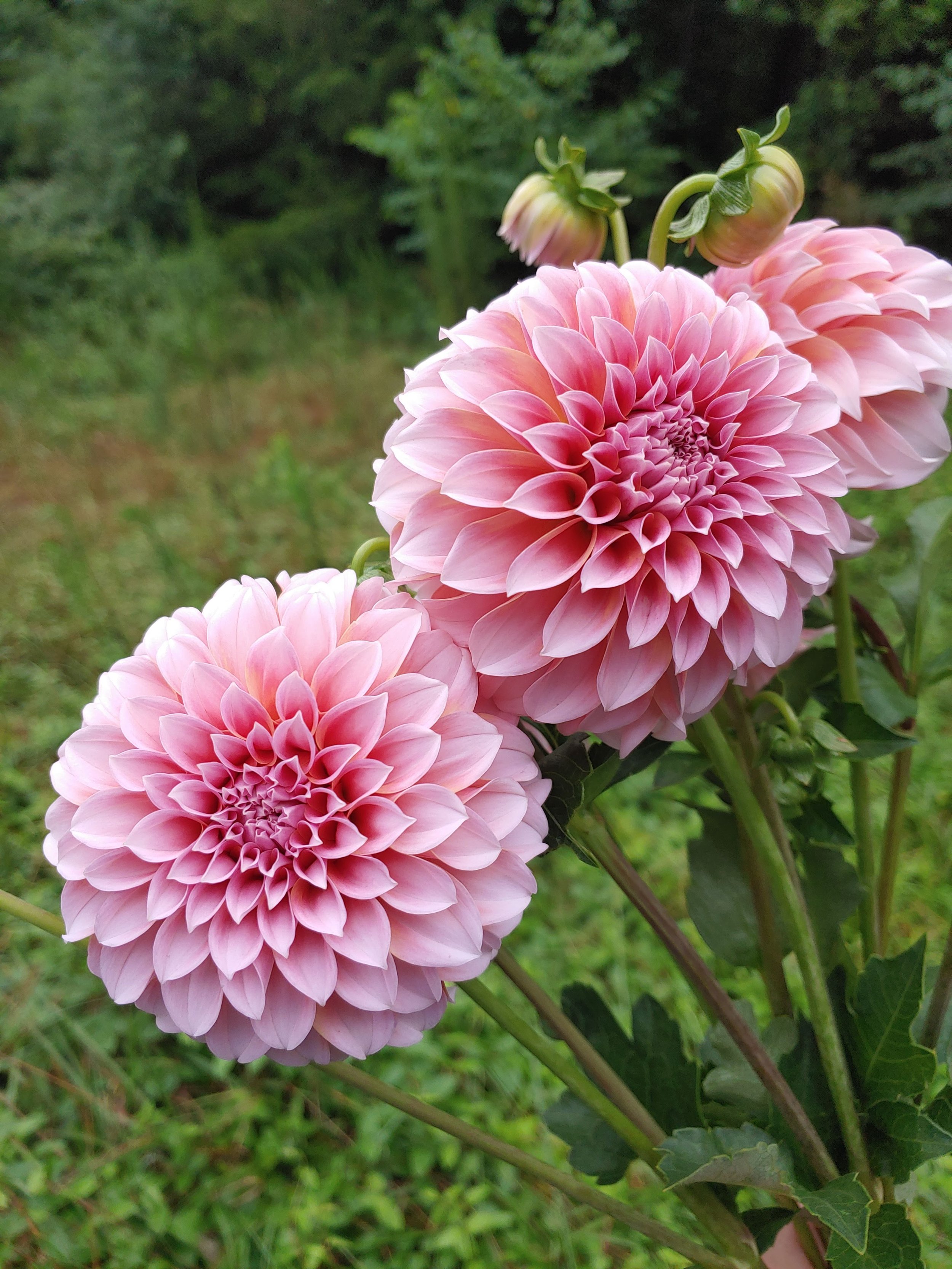Dahlia Game Plan 2024: Choosing Varieties
What dahlias should I grow? What will thrive in this hot humid climate?
I can’t tell you how many times I’ve been asked that question. Often people assume that I just pick what I think is pretty. And yes- looks play into it. But the longer I grow in a hot climate, I understand that it takes more than just good looks to thrive here!
So what factors do I consider when choosing varieties for our trial gardens?
Customer preference: I grow a lot of flowers for florists who do very fancy weddings so that influences my color choices- white (always white!), pinks, peaches, neutral blending colors and a few burgundies mostly. Maybe you grow for a farmers market- that would influence your color choices - brights and fun colors!
If you have a home garden, this would mean you choose a color you like or that fits in your garden color scheme. Thankfully there are tons of dahlias out there so you can choose several in your color and then see if they fit the rest of the characteristics.
Heat tolerance: You hear this term thrown around a lot in the dahlia world- especially down South here. But what does it mean? Well that may depend on who you ask. But for me it means a few things:
The center of the dahlia stays closed in high temperatures.
The plant stays healthy with minimal maintenance through high temps
The bloom has a decent (4-6 days) vase life in high temps. Some dahlias will bloom in high heat but then will only last 2-3 days.
Peaches N Cream is an excellent example of a highly heat tolerant variety
Classification: There are lots of classes of dahlias but mainly I’m concerned with balls, decorative, waterlily, and formal to semi-formal types. Those work well as cut flowers and are also what my customers prefer.
Size: I do love the WOW factor of a 12” bloom but the reality is that my customers have no use for it. So I grow a few large blooms but mostly stick to things in the 3-6” size range.
One nice thing about growing in the South is that larger varieties do tend to shrink a bit here. Cafes are regularly more 6-7” in size than their normal dinner plate scale you may see elsewhere.
Orientation: Dahlia blooms can sit several different ways on a stem and that plays a bit factor in how you arrange/design with the bloom. Some face upwards, some face forwards (often called “clock facing”) and some sit at a 45 degree angle. The 45 angle is probably the most desirable and what I try to find. But I’m not going to turn down Cafe Au Lait just because she’s usually clock facing!
Petal Density: I’ve learned through many years of observation that dahlias with higher petal densities hold their shapes better. Ball dahlias with high density of petals tend to not blow their centers as quickly. You do have to let these open up a little longer to get a really full look but it’s worth the extra day or two.
Height: For me, I tend to choose varieties under 5’ because I live in an area that can get strong tropical storms. I cut out all the super tall dahlias (looking at you Lady Nathalie) because they always blew over no matter how many layers of netting we used!
Bloom time: I really like dahlias that bloom early. One- because I’m impatient to see them but also because I grow in a long climate area and I can usually get 2 strong flushes out of early blooming varieties. On the flip side, our long climate gives us a chance to grow varieties that take 120+ days to bloom (looking at you Nicholas) My favorite early varieties are Peaches N Cream, Sweet Fabienne, and Linda’s Baby.
Bred in the right climate: Years ago you couldn’t find dahlias that were bred in hot climates, but these days there are a few places you can get them. I really do think the breeding climate makes a difference. I see dahlias from hot climate breeders thrive from year one. Whereas sometimes I have to grow a dahlia from elsewhere a few years to get it acclimated to our climate. So look around and find out who’s breeding close by.
We all have different things we are looking for in our dahlias. But over the years the above characteristics are what I have found that attribute to varieties that are successful in my field.










